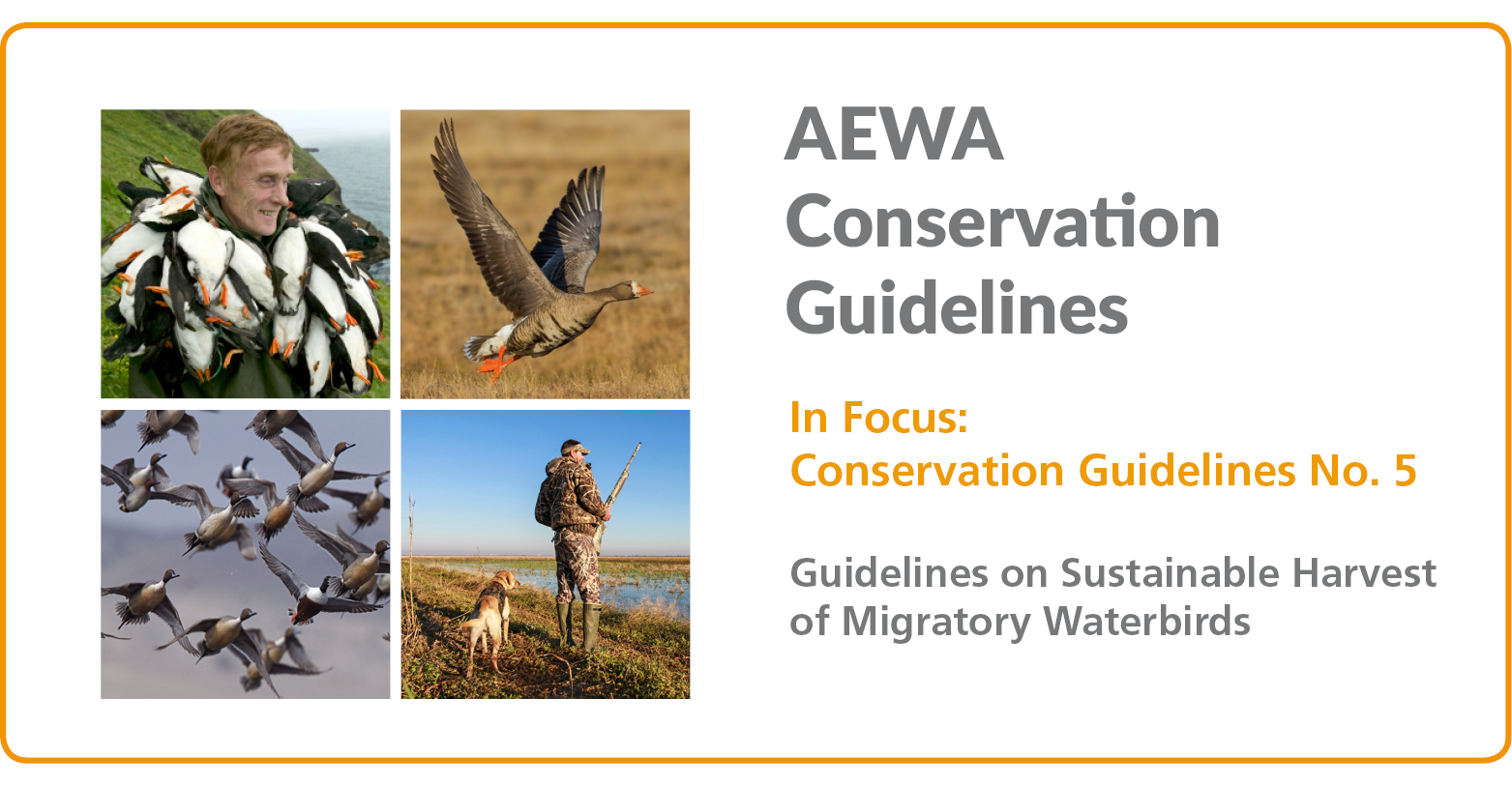In Focus: Fully revised AEWA Guidelines on Sustainable Harvest of Migratory Waterbirds (AEWA Conservation Guidelines No. 5)

From left to right:
Atlantic Puffin hunter with catch, Vestmann Island, Iceland © Minden Pictures/Masterfile.com; Greater White-fronted Goose © Robert L. Kothenbeutel/ Shutterstock.com; Pintails with Shovelers and Teals © Tom Reichner/Shutterstock.com; A duck hunter with his hunting dog and shotgun © Bud Force/robertharding.com
Bonn, 7 November 2018 - At the request of AEWA Contracting Parties, the AEWA Technical Committee and international organizations, a comprehensive revision of the AEWA Sustainable Harvest Guidelines was undertaken in the course of 2015 with the aim of widening the scope of the Guidelines. It was funded by La Fondation François Sommer pour la Chasse et la Nature, Jægernes Naturfond (Denmark), the Danish Centre for Environment and Energy (Aarhus University, Denmark) and the Ministry of the Environment of the Czech Republic, and carried out by the Waterbird Harvest Specialist Group of Wetlands International (WHSG).
The first version of the Guidelines had been adopted through Resolution 1.10 in 1999 and COP2 requested (through Resolution 2.3) an update which was published in 2005 as No.5 in the AEWA Conservation Guidelines series. Since then, AEWA has developed a series of initiatives to implement policies and actions relevant to sustainable harvest, such as the first two international species management plans in European context that include adaptive management frameworks.
As part of the recent revision process, a drafting workshop was held in Denmark in March 2015, the first text was submitted to the AEWA Technical Committee in July 2015 and a second draft was approved for submission to MOP6 by the Standing Committee. In November 2015, MOP6 adopted the final version which has been published as No. 62 in the AEWA Technical Series. The adoption of these revised guidelines represents a milestone in the work of AEWA on ensuring that any waterbird harvest in the Agreement area is sustainable.
The intention behind the revision was to take a broader perspective, addressing the variety of harvesting methods and motivations found throughout the AEWA region and considering their implications for the management of waterbird harvests to ensure their sustainability.
The guidelines show that effective management can be achieved throughout the flyway, as demonstrated by the first examples of adaptive management of migratory waterbirds which were successfully implemented in the African-Eurasian region. In response to requests for guidance on a number of issues not covered in the original guidelines, additional advice has been provided to address these gaps.
While the guidelines are not by any means exhaustive, they do set out the principles by which those managing or using waterbird species, that may be hunted, can reduce the threats to and take full advantage of any opportunities that can accrue for the conservation of birds.
As well as identifying a clear aim, namely to provide advice on how to ensure that waterbird harvests are managed sustainably, the guidelines also set out principles of harvest management – agreement on population delineations; regular, systematic and timely reporting of population estimates, (preferably annually); estimates of total harvest; and coordinated data on pre-nuptial migration and breeding periods so that appropriate open hunting seasons can be established. In addition, consideration is given to a decision-making and institutional framework, which should aim to ensure that broader socio-ecological aspects are taken into account, through engagement with stakeholders, and that risks are acknowledged and understood when policies are being formulated.
The Guidelines also contain sections on understanding the methods of and motivations for harvesting, a code of conduct for hunters, specific management issues relating to harvesting and habitat management and the mitigation of the effects of disturbance.
Last updated on 29 March 2019


